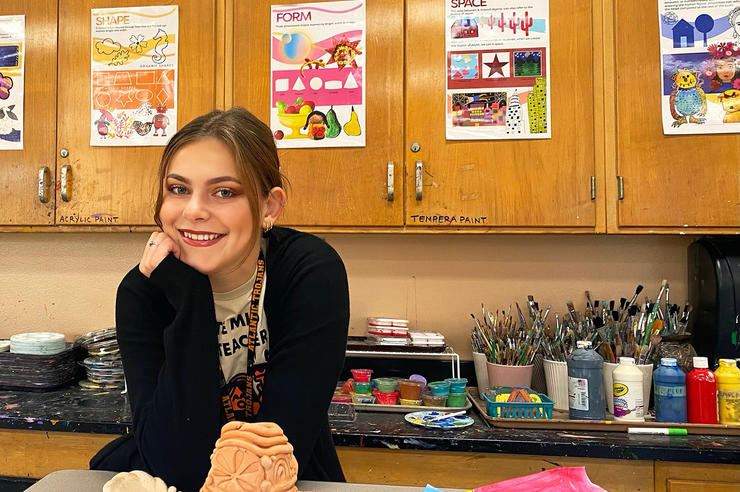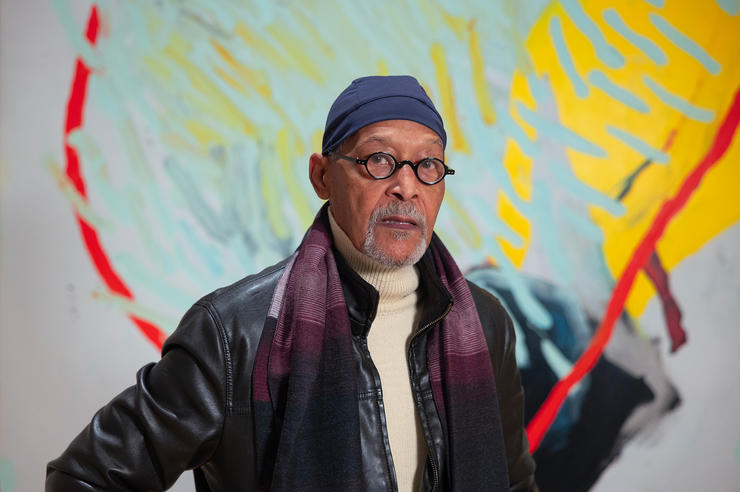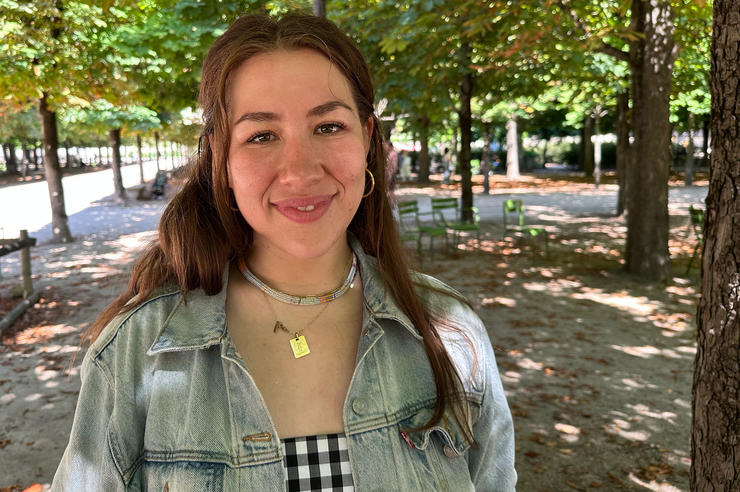Artist’s work lights up Iowa City
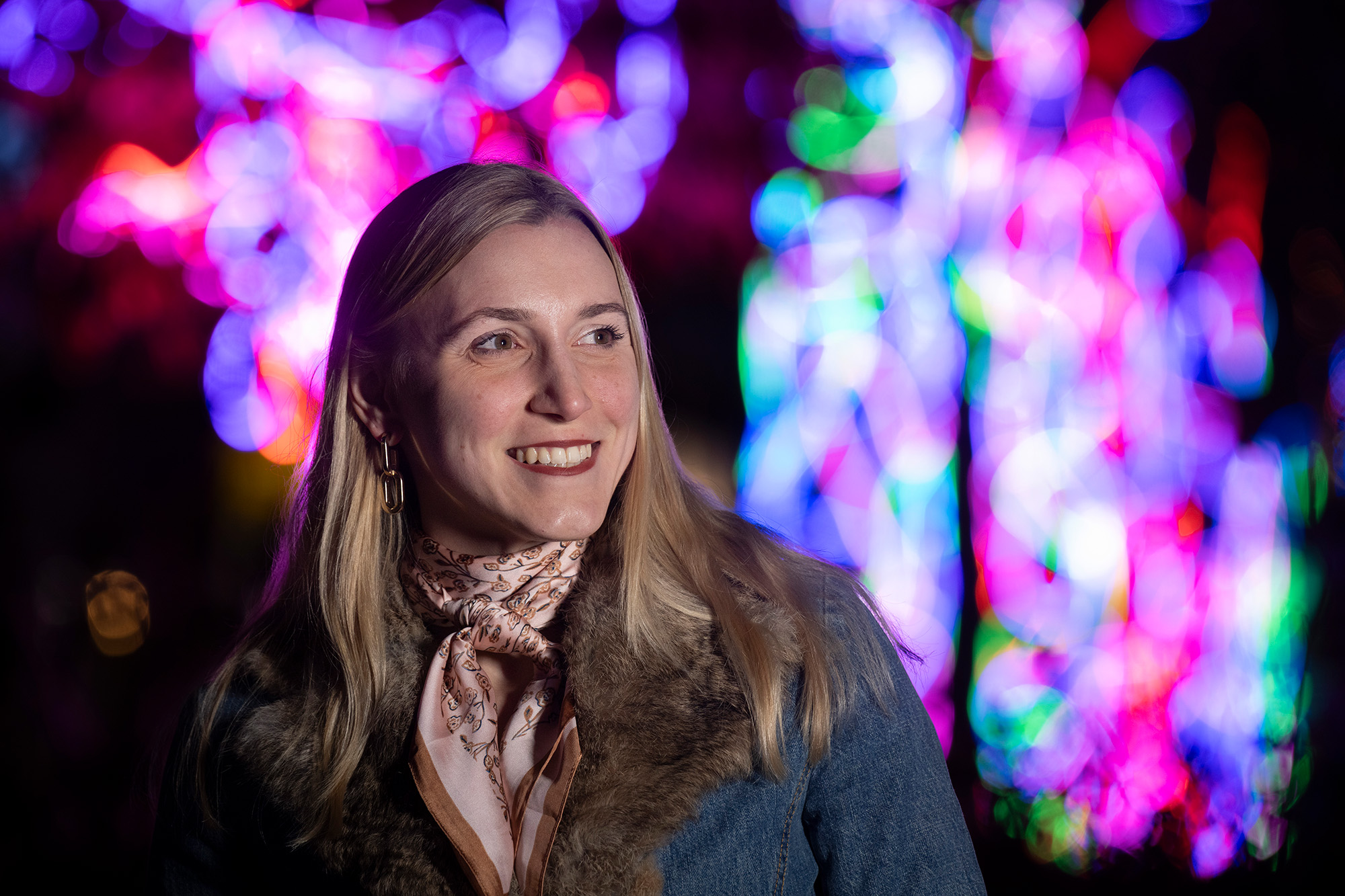
Ali Hval hopes to make your winter walk through downtown Iowa City a little more whimsical.
For the second year, the artist and lecturer in painting and drawing at the University of Iowa School of Art and Art History installed a series of Scribble Trees on Iowa City’s downtown pedestrian mall, art that lights up the night along with more traditionally light-wrapped trees.
The public art consists of thousands of feet of rope lights meant to look like doodles on the trees’ trunks.
Hval is from Birmingham, Alabama, and received two art degrees from Iowa (MA 2018, MFA 2019). Her work is interdisciplinary, combining ceramic, fabric, installation, and painting. She also is an avid muralist, having completed more than 40 public murals and projects in communities across the United States.
This year’s Scribble Trees is double the size of last year’s, utilizing 14 trees on both sides of the walkway. While the lighting on the new trees still has a “scribble” feel, Hval says she experimented with new formats, including smaller rope lighting and lights that change color.
“And if the city wants more next year, then I’ll come up with even more versions,” Hval says.
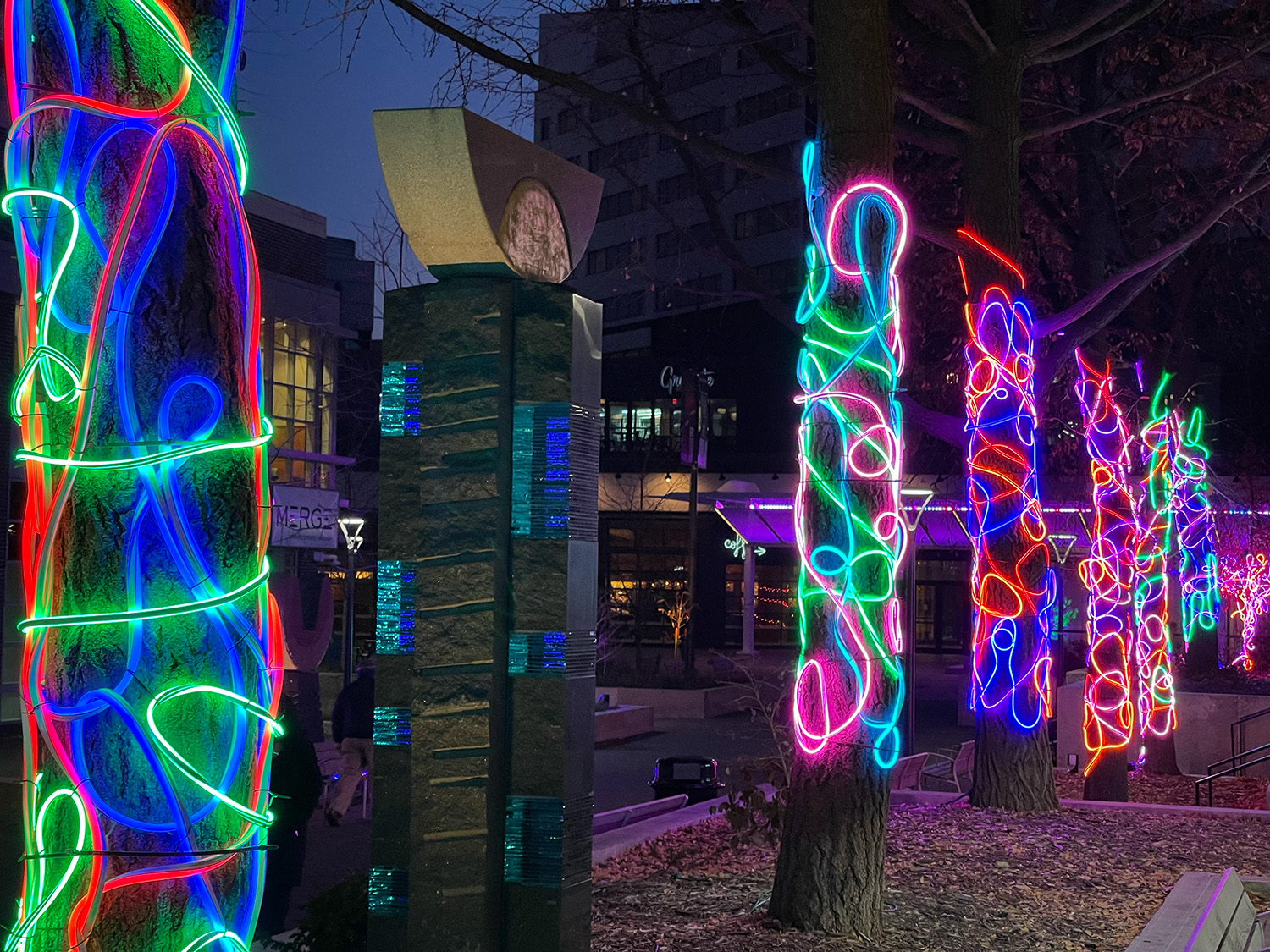
How did the Scribble Trees come about?
Betsy Potter reached out to me from the Iowa City Downtown District. She had an idea about a tree light installation downtown. We imagined doing something with rope lights as I’ve worked with them before.
I teach Life Drawing classes at the university and the first thing we talk about is gesture drawing, which is where you create drawings with really expressionistic lines that travel through the figure. Thinking about that with the trees, I thought, “How can I have these scribbly lines tracing the contours of the trees?” which is how I finally conceptualized the Scribble Trees. The rope lights are accentuating the tree. You can still see the form of the tree underneath it, but there’s a lot of movement within the lights themselves.
Why are public art installations such as the Scribble Trees important?
People often think of art as something that is confined to the gallery space, something that only exists within white walls or only within an institution—a stuffy thing that they can’t understand. Public art is really great at bridging that gap and allowing anybody to experience it and find joy in it. Public art often is immersive and encourages people to come and interact with it. It feels like something that is more familiar. It isn’t something that the everyday person can’t understand.
How does the art you create in the studio influence your public art, and vice versa?
I think a lot of it is subconscious. I’m often thinking about the space and how the space relates to the pieces that I’m making. And I think public art is similar, such as how the lights from the Scribble Trees changes the entire corridor.
Sometimes it’s thinking about scale in my work. I used to make really small work, and then I started painting murals and started imagining how I can make my studio pieces bigger.
The content I’m thinking about in my studio work is vastly different from the Scribble Trees that I’m putting on the ped mall, but they’re still both whimsical. That’s where I think the two feel similar to me. Colorful, whimsical, gestural—all of that exists in both my studio work and public art.
“It seems like wherever I am in Iowa, I’m almost making little homes in all of these places. If I do a mural in the middle of Nevada, Iowa, I get to know everybody for the week that I’m there—everybody’s so generous. The amount of generosity that I’ve received from some of these small communities is what makes me want to keep it up.”
As a teacher, what do you hope your students get from your classes?
I’m currently teaching a couple sections of life drawing, where we have models in, and the students learn how to draw the human body. Students are inundated with these perfect-looking bodies on social media, and they don’t know what real bodies look like sometimes, except for their own and possibly a handful of other people. But we have models in at all shapes and sizes. Models who are postpartum, who have scars, and who have had multiple children. We’ve had a model who has had scoliosis, so with a unique curve to their back. So, students are able to see a lot of different people that they probably wouldn’t be able to see before.
I’m hoping they see all that a body can be and thinking about how we can normalize all these different bodies. They may see a model with wrinkles or cellulite, and instead of being something they need to get rid of, it just becomes a normal part of the human body. I see their attitudes change over time. So, besides learning how to draw the figure, they also get this important life lesson of what a body can be.
What made you want to stay in Iowa after finishing your MFA?
The big things are the people and the public art. There’s so much public art that can be made here, and I’ve made so many relationships through doing public art. I’ve really found a great community within Iowa. I have so many connections that I couldn’t ever imagine having before. It seems like wherever I am in Iowa, I’m almost making little homes in all of these places. If I do a mural in the middle of Nevada, Iowa, I get to know everybody for the week that I’m there—everybody’s so generous. The amount of generosity that I’ve received from some of these small communities is what makes me want to keep it up.
Along with the Scribble Trees in downtown Iowa City, you also currently have an exhibition at the Gadsden Museum of Art in Gadsden, Alabama. What’s next for you and your art?
I have another exhibition coming up at Bells Gallery in Dothan, Alabama. I’m going to be making some smaller pieces. Most of the work I make is pretty large and installation based, but these will be smaller pieces that hopefully people will buy to put in their homes. So, I’m excited to shrink down my work after making all this massive work for my museum exhibition.
I also just got accepted to Create! Magazine, which is exciting for me because I’ve been wanting to get in that for a while.
I also have a public art project coming up in the Coralville Recreation Center on Martin Luther King Day. This will be collaborative, so people are going to be assisting in its creation with a paint-by-number style mural. It’s going to be a really colorful, whimsical mural for their space.
